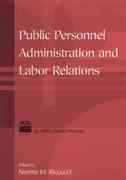Answered step by step
Verified Expert Solution
Question
1 Approved Answer
II. MARKETS: MONOPOLY 11. Monopoly a. It is characterized by its market power b. As in perfect competition, it takes as given the prices that
II. MARKETS: MONOPOLY 11. Monopoly a. It is characterized by its market power b. As in perfect competition, it takes as given the prices that are determined in the market by the forces of demand and supply. c. They do not always operate with economic gains d. It faces perfectly elastic demand. and. None of the above 12. Market power is a. it is the ability to increase the price without losing all sales. b. exists whenever the firm faces a downward-sloping demand curve. c. it is greater the less elastic the demand is. d. the smaller, the more positive the cross-elasticity of demand. and. All of the above. 13. In Monopoly a. There are barriers to entry for other firms b. When the product they produce has no close substitutes c. They are always private companies d. Economic gain is eliminated in the long run and. The answers a and b 14. Barriers to the entry of other firms that enjoy monopolies a. They are created in the long run by economies of scale. b. By the government by offering licenses to a firm to operate in a certain country c. Patent laws. d. Consumer preferences (product loyalty) and. All of the above 15. If a firm with market power maximizes profit by producing at the elastic point on the demand curve, then a. It has no direct competitors. b. Its marginal cost must be zero at the profit-maximizing level of output. c. Demand must be perfectly elastic. d. cannot be in equilibrium in the long run. 16. One method of measuring the extent to which the firm has market power is a. Lerner index b. The price elasticity of demand for the product that the firm produces c. The income elasticity of demand for the firm's product d. both a and b and. all of the above 17. Monopolistic competition is similar to monopoly in that both market structures have a. A small number of companies. b. negatively sloping demands for companies. c. long-run equilibrium economic profit. d. Easy entry and exit. and. All of the above. 18. The main difference between perfect competition and monopolistic competition is a. There is product differentiation. b. The entrance is difficult. c. there are a lot of sellers. d. Consumers have perfect information regarding prices. 19. In long-run equilibrium under monopolistic competition, a. the price is equal to the long-run minimum average cost. b. the price is higher than the long-run minimum average cost. c. Businesses earn less than a normal profit. d. Firms have the incentive to enter the market. and. both a and d
Step by Step Solution
There are 3 Steps involved in it
Step: 1

Get Instant Access to Expert-Tailored Solutions
See step-by-step solutions with expert insights and AI powered tools for academic success
Step: 2

Step: 3

Ace Your Homework with AI
Get the answers you need in no time with our AI-driven, step-by-step assistance
Get Started


